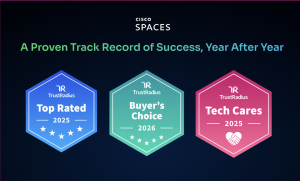
Engaging customers effectively is at the heart of retail success, driving loyalty and boosting sales. In this comprehensive guide, we explore practical strategies to elevate customer interactions and cultivate meaningful connections, through retail customer engagement.
What is Customer Engagement?
Customer engagement in retail refers to the interactions between retailers and customers across multiple touchpoints. This includes physical stores, websites, social media platforms, and mobile apps. These efforts aim to create personalized experiences that resonate with customers and foster long-term relationships. Effective engagement plays a critical role in building brand loyalty. It improves customer satisfaction and ultimately drives sales by ensuring customers feel valued and understood. Over time, customer engagement has evolved significantly, leveraging digital tools, data analytics, and social media. Innovations like in-store technology, such as interactive kiosks or augmented reality, further bridge the gap between physical and digital experiences.
Why is Retail Customer Engagement Important?
In today’s competitive retail landscape, effective customer engagement is essential for businesses aiming to build lasting relationships. This is achieved by delivering exceptional experiences that drive loyalty and retention.
Enhances Customer Satisfaction
Engaging customers through personalized interactions, such as tailored recommendations or exclusive offers, significantly boosts their satisfaction. This approach also encourages repeat visits, as customers are more likely to return to a brand that meets their unique needs. A higher level of satisfaction fosters stronger emotional connections with the brand. That in turn drives customer loyalty and advocates for long-term relationships. By continuously enhancing the customer experience, retailers can transform satisfied shoppers into brand ambassadors who contribute to sustained business growth.
Improves Customer Retention
Consistent customer engagement helps establish trust and build long-term relationships, encouraging customers to return to your store or platform repeatedly. By maintaining meaningful interactions, retailers can stay top-of-mind and create a sense of loyalty that keeps existing customers invested in the brand. Retaining current customers is significantly more cost-effective than acquiring new ones, as repeat customers require less marketing spend and often contribute higher lifetime value. As a result, strong engagement becomes a key driver of profitability and sustainable growth for retail businesses.
Monitors Customer Feedback
Monitoring customer feedback through engagement channels allows businesses to gather real-time insights into customer preferences and identify pain points effectively. By leveraging tools such as surveys, reviews, and social media interactions, retailers can understand what customers value and where they face challenges. This feedback empowers businesses to adapt quickly, refine their offerings, and enhance services to better align with customer needs. Ultimately, using customer feedback for data-driven decisions ensures a more personalized and responsive customer experience, boosting satisfaction and loyalty.
Boosts Brand Awareness & Referrals
Positive customer engagement fosters brand advocacy, as satisfied customers are more likely to recommend the brand to friends, family, and peers through word-of-mouth referrals. These personal endorsements increase visibility and enhance brand recognition, creating a ripple effect that attracts new customers organically. Engaged customers often share their positive experiences both offline and online, amplifying the brand’s reputation and credibility. By prioritizing exceptional engagement, businesses can harness the power of referrals to drive customer acquisition and expand their reach in competitive markets.
Reduces Customer Acquisition Costs
Well-engaged customers often share their positive experiences on social media and other platforms, effectively promoting the brand without requiring expensive marketing campaigns. This organic advocacy reduces reliance on costly ad strategies, lowering the cost per acquisition (CPA) while expanding the brand’s reach. Additionally, loyal customers who generate word-of-mouth referrals help attract new customers with little to no additional cost. As a result, businesses benefit from higher return on investment (ROI) for their marketing efforts by leveraging customer engagement to drive growth efficiently.
5 Strategies to Increase Customer Engagement
1. Don’t Skip the Basics
Traditional engagement strategies form the foundation for strong customer relationships. Even with the rise of new technologies, establishing trust through basic principles like consistent brand voice and personal interaction remains essential for meaningful connections.
Establish a Strong Brand Voice
A consistent brand voice across all customer touchpoints—from in-store communication to social media—is crucial. It builds trust, reinforces brand identity, and makes customers feel more connected to your brand. A strong, authentic voice encourages long-term loyalty by ensuring the customer experience feels seamless and genuine no matter where the interaction takes place.
Leverage Artificial Intelligence (AI)
AI offers powerful tools for personalizing customer experiences, such as using chatbots, analyzing data, and delivering personalized product recommendations or special offers based on customer behavior. While AI enhances efficiency and personalization at scale, it complements—not replaces—human interactions, ensuring a balance of technology-driven engagement and personal touch.
Create Virtual Storefronts
Virtual storefronts, powered by technologies like augmented reality (AR) and interactive 3D views, extend the in-store experience into the digital space. This immersive approach caters to online shoppers, allowing them to try or view products virtually while feeling connected to your brand. These tools blend personalization with engagement to deepen the customer’s connection to your offerings.
2. Create Personalized Customer Experiences
Today’s customers expect more than just transactions—they want tailored experiences that reflect their unique preferences and needs, especially in retail.
Use Location-Based Engagement
Location-based engagement uses geofencing or proximity data to send personalized messages or offers to customers as they enter certain areas. For instance, Cisco Spaces triggers real-time notifications tailored to specific store zones based on customer movement within the store, enhancing the shopping experience by creating moments of surprise and relevance.
Utilize Visitor Personas
Visitor personas are created by analyzing customer behavior data and preferences, allowing retailers to design targeted campaigns for specific customer segments—frequent visitors or first-time shoppers, for instance. Cisco Spaces leverages location data to generate personas, empowering retailers to deliver highly personalized messaging and promotions aligned with distinct shopper profiles.
3. Deliver Highly Personalized, Real-Time Messaging
Timing plays a pivotal role in customer engagement. Delivering the right message at the optimal moment helps capture customer attention and drive action effectively.
Use Behavioral Triggers
Behavioral triggers allow retailers to personalize offers and messages based on customer actions, such as time spent browsing specific product areas or interacting with certain items. Cisco Spaces enables real-time notifications via SMS, email, or apps for timely and relevant engagement based on customer behavior inside the store.
Integrate Real-Time Data
Real-time data from various touchpoints helps retailers understand customer behavior in the moment, allowing for instant, needs-based interactions. Cisco Spaces integrates this data to automate relevant engagement, helping brands connect with customers through personalized conversations when it matters most.
4. Leverage Real-Time Customer Data Analytics
Real-time analytics allow retailers to gain immediate insights, adapt strategies, and improve customer engagement based on live data.
Track Real-Time Visitor Analytics
Real-time analytics track metrics like foot traffic, dwell time, and movement patterns to reveal customer behavior and engagement within the store. Cisco Spaces offers these insights, helping retailers optimize store layouts and staffing decisions.
Use Impact Analysis
Impact analysis helps measure the success of in-store campaigns or changes by linking customer behavior and sales data. Cisco Spaces’ Impact Analysis tools enable retailers to evaluate strategies and tie visitor engagement directly to business outcomes, driving informed decision-making for continued improvement.
5. Foster Omnichannel Engagement Across Touchpoints
Seamless omnichannel engagement ensures customers experience consistent interactions with your brand across physical stores, websites, social media, and other channels.
Integrate Omnichannel Data
Connecting customer data across all touchpoints—physical and digital—creates a unified experience. Cisco Spaces unifies data from both in-store interactions and online behaviors, enabling retailers to craft personalized engagements and deliver messages that seamlessly transition across channels.
Use Loyalty Program Integration
A well-integrated loyalty program encourages customers to interact across multiple channels. With insights provided by Cisco Spaces, retailers can track customer activity and reward them across touchpoints, whether online or in-store. This fosters retention, encourages repeat interactions, and strengthens the bond between the customer and the brand.
Transform Your Retail Customer Engagement with Cisco Spaces
Cisco Spaces is a powerful platform that enables retailers to turn stores into smart retail spaces, enhancing customer engagement through real-time, location-based interactions, and creating personalized experiences. Capitalizing on Cisco hardware like Catalyst, Meraki, and Collab devices, the platform transforms wireless networks into sensor-rich environments to unlock actionable insights for your retail operations.
Enhancing Customer Engagement
Cisco Spaces empowers retailers to seamlessly onboard visitors to Wi-Fi, creating effortless connectivity across all store locations, globally. The platform provides in-depth in-store behavior analytics, helping businesses understand visit durations, shopper frequency, and how locations compare with each other. With tools for visitor segmentation, Cisco Spaces allows retailers to profile customers (e.g., first-time visitors, frequent shoppers, VIPs) and deliver personalized, multi-channel engagements—including SMS, email, and app notifications tailored to shopper behavior and personas.
Optimizing Retail Operations
Cisco Spaces enables real-time visitor density monitoring, the data from which can improve safety and compliance by triggering alerts when occupancy thresholds are reached. In addition, detailed analytics can inform staff schedules, store layouts, and promotions. Retailers can also manage tagged digital and physical assets efficiently, leveraging rules and triggers to optimize asset utilization and management.
Seamless Integration & Scalability
Designed to address the needs of enterprises of all sizes, Cisco Spaces combines Cisco’s network infrastructure with partner applications to deliver customer intelligence, rewards program integration, and business automation. Retailers can integrate enterprise mobile loyalty apps, customize captive portals, and utilize tools from the Spaces IoT Device Marketplace for specific outcomes. The platform offers unmatched scalability and efficiency, ensuring seamless implementation without requiring significant changes to your existing systems.
Witness the platform in action and discover how it can optimize customer acquisition, engagement, and operational efficiency — all while delivering a smarter and safer retail experience.
Explore how Cisco Spaces can transform your retail engagement. Visit our Experience Center today.


